While we had already spent three days by the shores of beautiful Lake Atitilan making day trips out to highland villages, it was only on our final day in Panajachel that we actually got around to touring the lake and a few communities around it.
Of volcanic origin, Logo de Atitlan it is the deepest lake in Central America and a poster child for Guatemala’s natural beauty. Surrounded by steep escarpment on all sides, the three often cloud-adorned volcanoes -- Tolimán, Atitlán and San Pedro tower over its southern flank forming a stunning backdrop to its crystal blue waters.
The Popul Vuh, the ancient Mayan creation myth, alludes to the lake as being the primordial sea that existed before the first world emerged. The trio of volcanoes represent the three stones that the Maize God placed in the cosmic hearth at creation. So even beyond its beauty, the lake has a special significance for the Maya.
Along the shores of the lake are over a dozen pueblos, some regular villages and others more akin to hidden enclaves. Each settlement has some unique characteristics and caters to different types of travelers. Majority of the travel within the area around lake is by boat and Calle Santander, the main commercial drag in Panajachel, itself the busiest and most built-up lakeside settlement, has a proliferation of travel agents who advertise boat tours on the lake.
Depending on the start time, the tour calls in on 2 to 4 settlements and allows time for you to explore on your own. We elected to take earliest departure that would include ‘Cuatro Pueblos’ (4 villages). As we compared itinerary and cost with a few agents (customarily we check with three when options are available), M’s repeated reference to Cuatro Lagos (4 lakes), a trip that would have been impossible by boat, caused no little confusion!
Strong winds picked up the previous evening as we returned from Chichi and it continued to be stormy through the night. Trees all around us were still swaying wildly as we woke up that morning and white foamy waves on the surface of the lake led us to wonder if the lake tour would be cancelled. We got ready nevertheless and when someone came to pick us up at the appointed hour, he checked with the boat captain and confirmed that the trip was on. We walked to the boat dock and stepped into a lancha, a small motor boat, where we joined a few others who were making the same trip as us.
Water taxis transport people around the lake and several were taking off to different destinations this morning. As the boat left the dock and bounced over the waves towards our first destination, San Marcos La Laguna, we drew our jackets closer and hood down in an attempt to stay protected from the wicked wind and spray.
Video: Lago Atitlan on windy day
On the north-west side of the lake, the pretty village of San Marcos La Laguna lives a double life. The mostly Maya community occupies the higher ground well above the lake while the flat forested patch close to the shoreline is a haven for contemporary new-agers and global seekers. Attracting modern-day hippies with a purpose, it caters to all things spiritual - meditation, yoga, Reiki, massage therapy, you name it and either the service is offered or taught at one of the ‘holistic centers’ that abound.
The most endearing feature of the hippie parts of town is that it practically has no roads — everything is reached by thin foot paths through trees and between buildings. Handmade signs direct you to the most common destinations at any intersection. From the boat dock, we ambled along the path leading up to the village center snaking through banana and coffee plantations and avocado trees. Our faces took on a permanently raised-eyebrow look as we scanned the myriad Reiki, Mayan Therapy and Mayan Healing signs.
Should we check out today’s Astro-weather at the Sidereal Astro Theology class while we drink a Liver Livener (carrot and beet) super-juice? No, not it the mood for that today. So we proceeded up the path till it converged with other paths at the main town square. Local commerce was represented in the form of a few vegetable vendors and a dried-goods store. Narrow paved streets radiate up from the square up the hill where most of the local people live. A small church on one side of the square was illuminated by candle-light and provided a cool retreat for a few minutes.
After wandering around for a bit longer and not feeling the particular spiritual energy of the place or the need to get our aura realigned (or whatever they do to auras), it was time to proceed. We retraced our way back to the boat dock.
Video: San Marcos pueblo and San Pedro volcano
Our favorite place on the lake was San Juan La Laguna, our next port of call. It doesn't have nearly as many tourists as other towns around the lake, and so is a much quieter place. The path leading up from the boat dock climbs steeply and is lined on both sides by stores that run by women who sell textiles woven by local women’s cooperatives. Everything is handmade and they use natural dyes such as carrot, achote (a red seed used for cooking), etc. The end product is of good quality and prices are fair since they cut out the middlemen and the profits directly support the local women and their families. There are also several art galleries that showcase paintings with typical Guatemalan themes, something you start to easily recognize after you have been to a few of them. Bright splashes of primary colors catch the eye and aerial view of everyday scenes dominate. After going in and out of a few of these we ventured further into the non-touristy part of town.
San Juan is a Tz’tujil town, one of 21 Maya ethnic groups that dwell in Guatemala. It is well-known for its authenticity and tranquility, but there is something else that sets it apart from the other villages. Some may recall the anxiety in some parts of the world caused by foretelling of Mayan apocalypse in 2012. According to the Mayan calendar 13 Baktun, Dec. 21, 2012, marked the end of a 5,000+ year cycle. This time marker became a mystical date for Guatemalans and for many others worldwide. Deeply inspired by this event, 12 talented local artists created murals in homage to 13 Baktun which adorn random walls on the streets of San Juan. The essence of their work speaks of transformation, new beginnings, renewal and breakthrough. More murals have since been added and it was a joy walking through the town discovering them.
The mural-hunt eventually morphed into a quest for cappuccino - muy caliente (very hot) by special request. A steaming cup at a nearby cafe hit the spot while we kept up a pleasant exchange with the young girl in charge. She asked a lot of questions and somewhat ruefully admitted she had never been out of Guatemala but was very keen to do so. We impressed her with the information that the red Bajaj moto taxis were "fabricados en India" and were pleased to her "no se" in response.
In sharp contrast to San Juan, stepping off the boat at San Pedro La Laguna we wondered if we had stepped on to a lake-side version of Bangkok’s Khao San road. Known as the backpacker mecca of Lake Atitlan, it attracts the younger bohemian crowd. Lodging is a little cheaper here and the shops parallel to the lake shore advertise activities like zip-line, African drumming, volcano hiking etc. The bars are fuller, the music louder and the atmosphere more infused with the scent of grassy substances.
If you are not inclined to join the merrymakers, you need to quickly retreat further inland which we attempted with only partial success. We expected and looked for a walking path along the lakeshore but much of this prime real-estate was taken up by hotels or restaurants and patronizing one of these was the only real way to enjoy panoramic lake view. After much walking we located what seemed like lake access path but the tiny patch of open space only succeeded in keeping us engaged for a couple of minutes. Cognizant of the time required to walk back to the boat, we retraced our steps.
The fourth stop for the day, Santiago Atitlan was the most anticipated. Directly south across the lake from Pana, it lies on the shore of a lagoon squeezed between the volcanoes of Toliman and San Pedro. It is the largest of all settlements surrounding the lake and was the capital of the Tz’utujil people in pre-Hispanic times. Although it is the most visited, it has the strongest indigenous identity and clings to traditional lifestyle and clothing of the Tz'utujil Maya.
Now the particular reason why we looked forward to coming here relates to the cult of Maximón (pronounced maa-shee-MOHn), also called San Simón, , an interesting and exotic tradition of the Tz'utujil people. He is a deity revered throughout the Guatemalan highlands. Assumed to be a combination of Maya gods, Pedro de Alvarado (Spanish conquistador of Guatemala) and the biblical Judas, Maximón is an effigy to which Guatemalans of every stripe go to make offerings and ask for blessings. The effigy is usually housed by a member of a cofradia (Maya religious brotherhood), moving from one place to another from year to year a custom believed to have created to maintain local balance of power. Maximón is not so much a benevolent deity but someone whose wrath you don't want to incur. So the worshiping of Maximón is to ensure that he stays out of your way.
The name, shape and ceremonies associated with this deity vary from town to town. This year Maximón ‘lived’ in Santiago Atitlan and was not averse to receiving visitors so long as they brought along his favorite offerings - cigarettes and/or alcohol. We understood that the guardians would be amenable to take cash in lieu, so did not make the requisite purchase as we stepped of the dock. Since the current home of Maximón would require some enquiring about and a walk uphill into town, we decided to engage an auto-rickshaw to take care of both. The rickshaw driver desperately tried to up-sell this trip into a full blown city tour but we were adamant that we wanted get to Maximón shrine and taking us there was all he was required to do.
We stopped in front of a nondescript house, with “Bienvenidos a Maximón’ carelessly painted at the gate. Inside was a wooden figure draped in colorful silk ties and scarves and a smoking cigarette! A couple of men had positioned themselves on either side, their primary tasks being to collect any offerings that are brought in, the Q10 entrance (additional Q5 for taking pictures) and to periodically tap the ash off the burning cigarette between Maximón’s lips! Now that is a job that requires no skills and you can keep for life! Effigies of Jesus and Christian saints stand or lie on one side of the room and Fruits and gaudy, flashing electric lights decorated his chamber. According to tradition, the locals guard him, worship him and the effigy is taken out in a grand procession during Semana Santa and rest of the year he resides with a caretaker receiving offerings.
Video: Cult of Maximon, Santiago Atitlan
After paying our respects to Maximón, we took the path downhill along narrow, shop-lined streets to the main town square. On one side was a large white stucco church that dates from 1571. A rounded stone staircase led to the entrance and inside green, red and gold drapes added color to the otherwise austere interior. Ranks of plain wood pews face the simple altar while figures of saints stood guard on ledges along the side walls. Each was dressed in colorful clothes and silk scarves. We learned that the wooden statues of the saints gets new handmade clothes every year sewn by the women of the village. One one side is a stone memorial commemorating Father Stanley Rother, a Catholic priest and missionary, who was dedicated to ministering to the local Tz'utujil but was murdered here in 1981 by a death squad made up of right-wing extremists in connivance of the Guatemalan Army. When we left the square we continued downhill through the busy streets making our way back to the boat but only after a spot of lunch.
The final ride back from Santiago Atitlan to Pana is one that we are unlikely to forget anytime soon. While the windy conditions since that morning seemed to have let up, the lake itself was still very choppy and the bewildering need of the boat captain to push the limits of speed attainable against 3-4 foot waves made it a complete white-knuckle and jarred bones affair.
The boat bounced over the rolling swells and soon muted gasps turned into loud shrieks. Stomachs sank in unison when the boat frequently dropped into a deep trough and we held on for dear life as tilted back upwards to ride the next wave. Frequently being tossed into the air, one could feel the brain rattle inside the skull and some minor bruising resulted from landing too close to the edge of the seat. It appeared the captain was determined not to pay any heed to the comfort of his passengers (he was on his feet and his head was not in our line of sight!) and the boat held its course and constant speed. After 45 minutes of this, a bruised and relieved bunch stumbled off the boat at Pana in need of a strong restorative.
Photo Album: Lake Atitlan
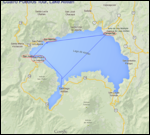
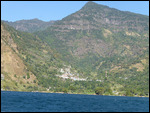
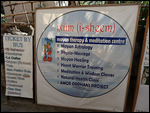
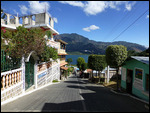

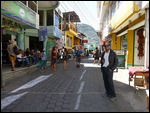


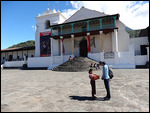
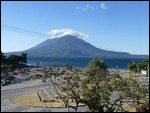
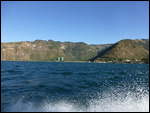


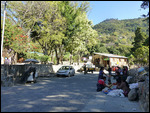


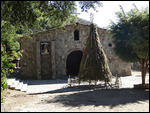
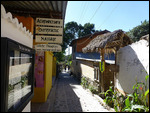
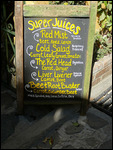
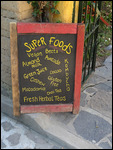
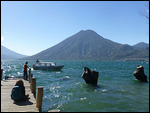

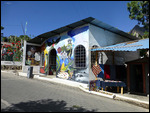
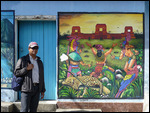
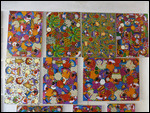
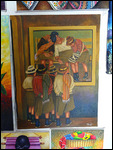
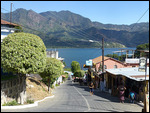
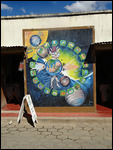




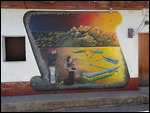
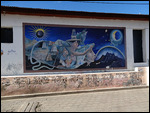
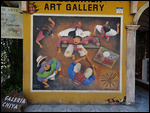
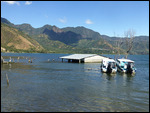
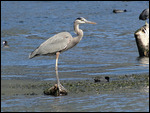




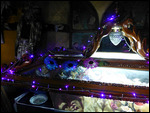
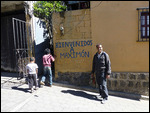
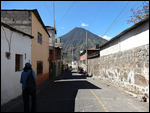
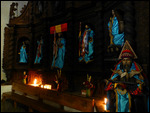
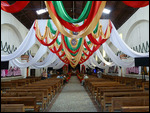
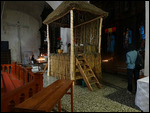
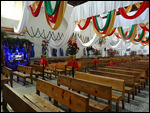
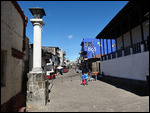
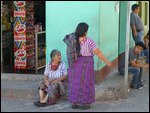





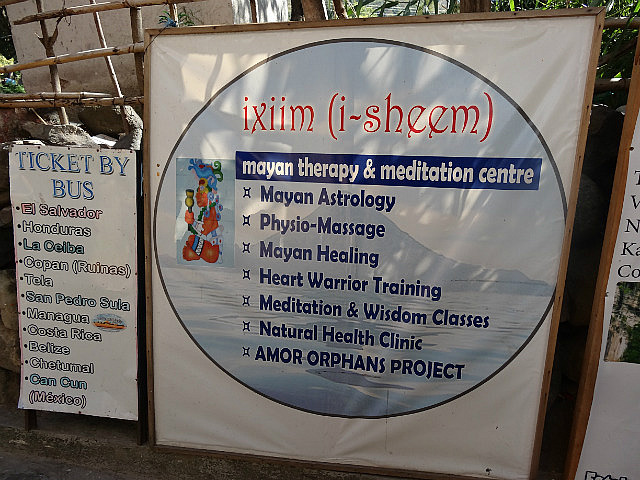
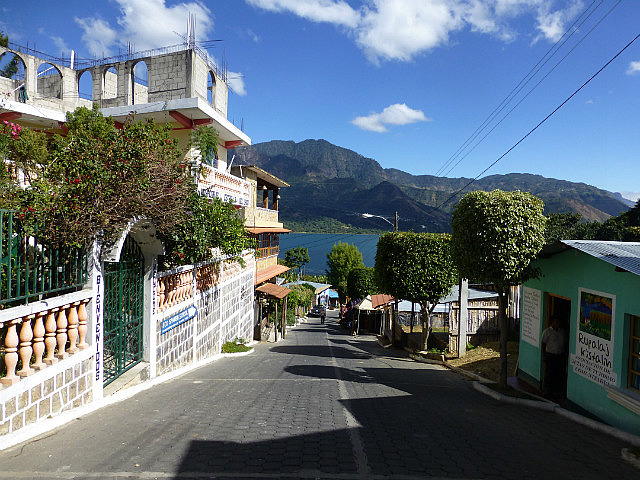
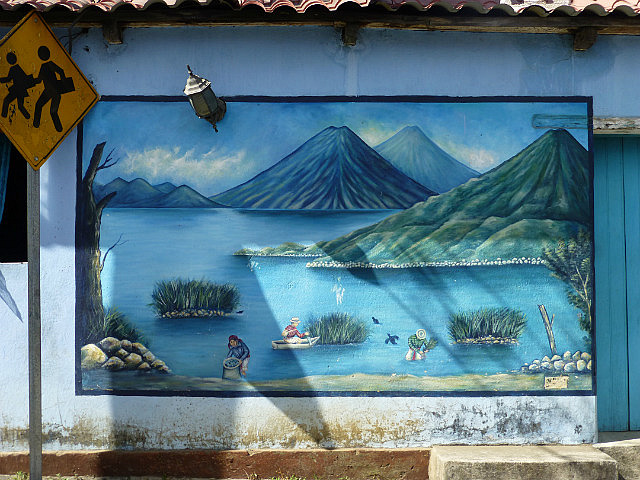
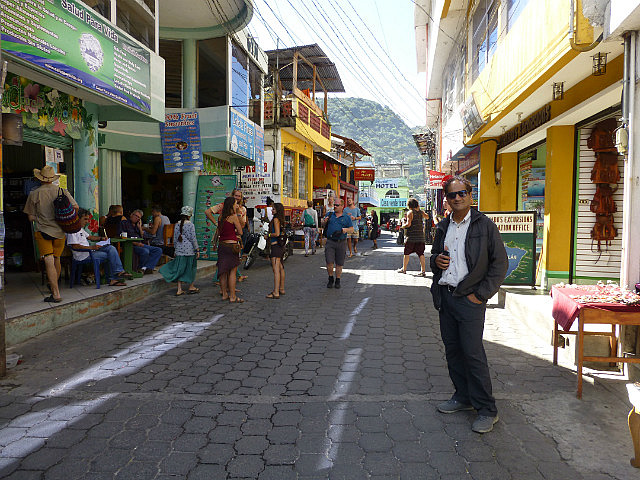
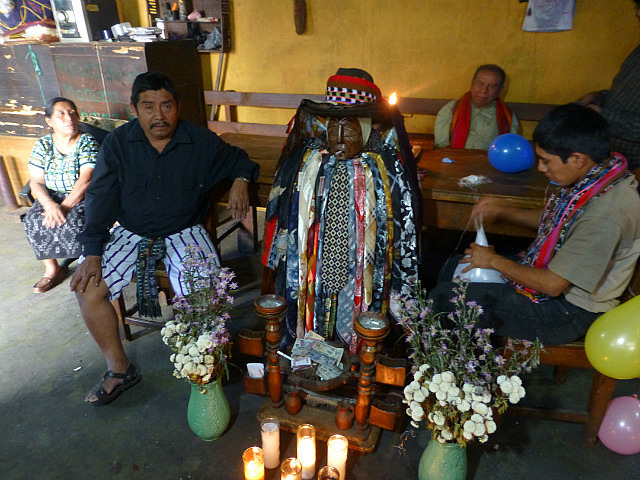

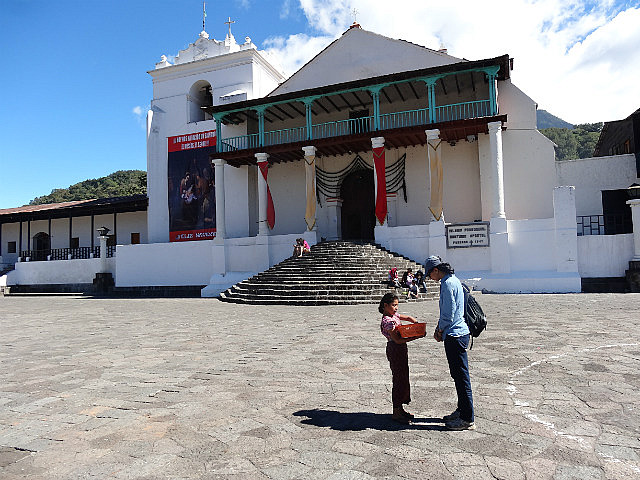
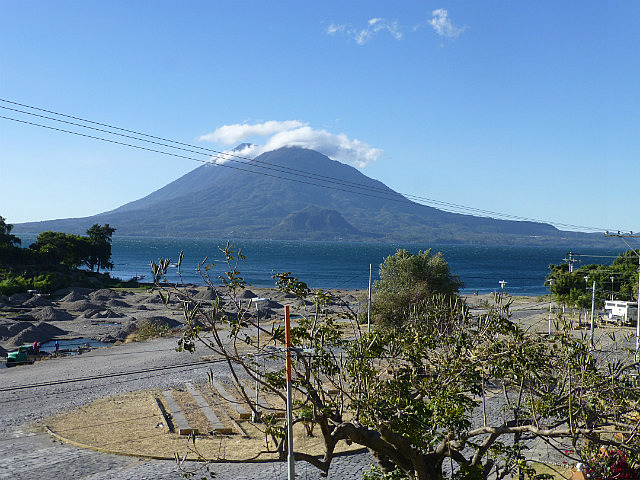
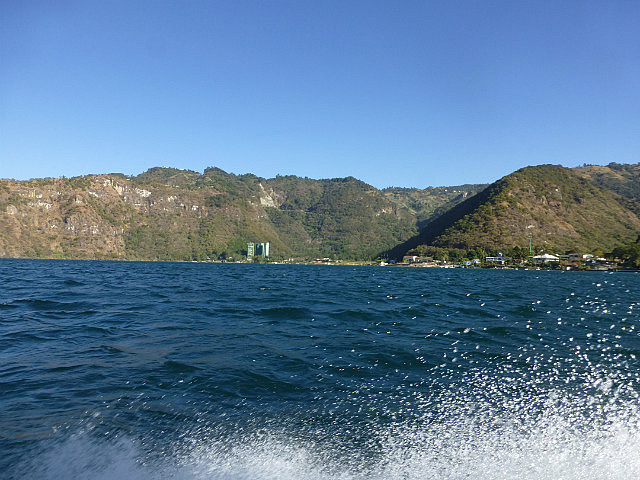
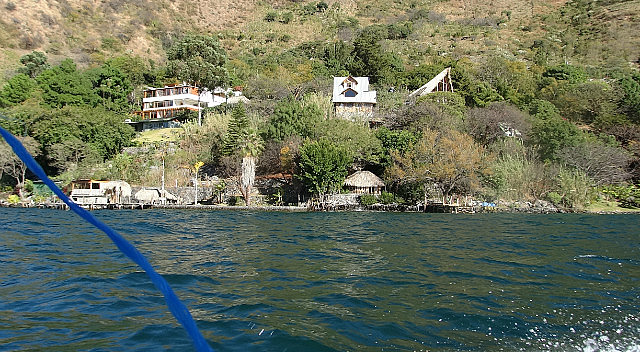
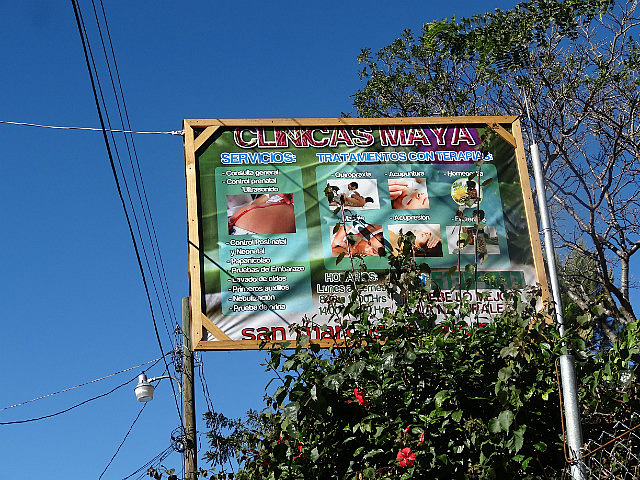


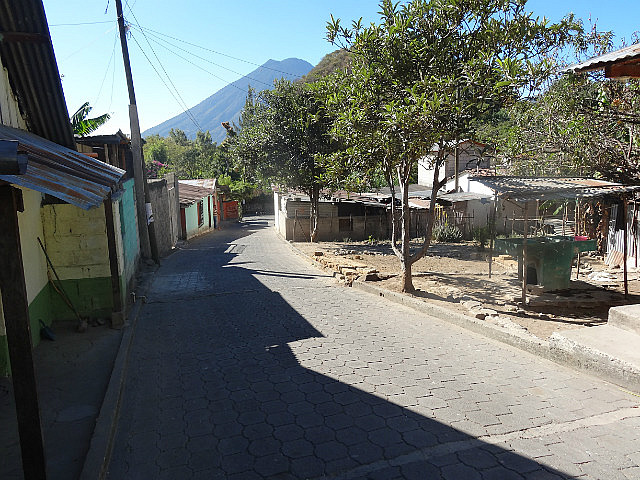
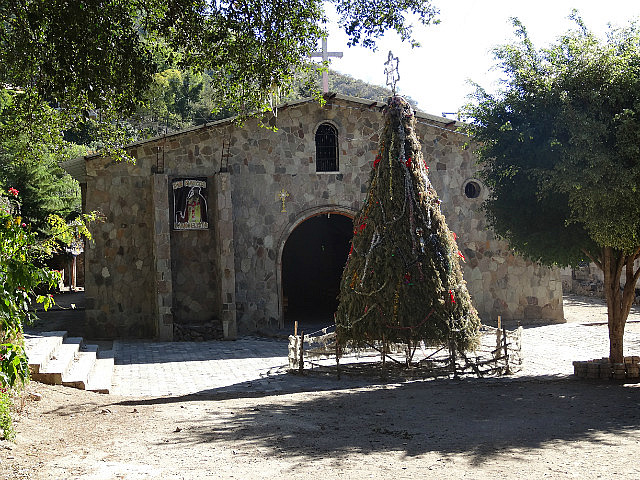

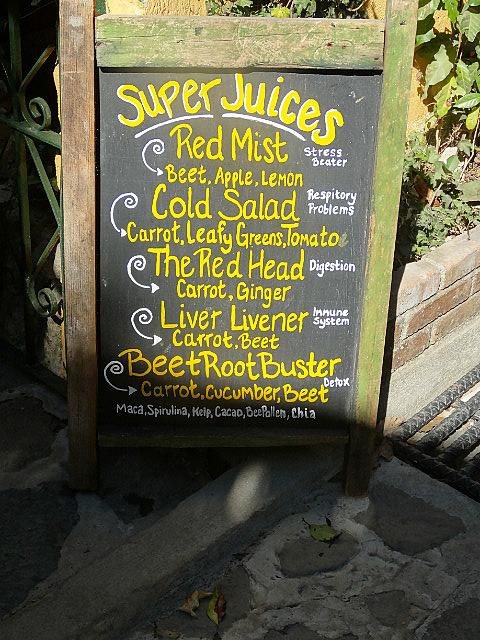
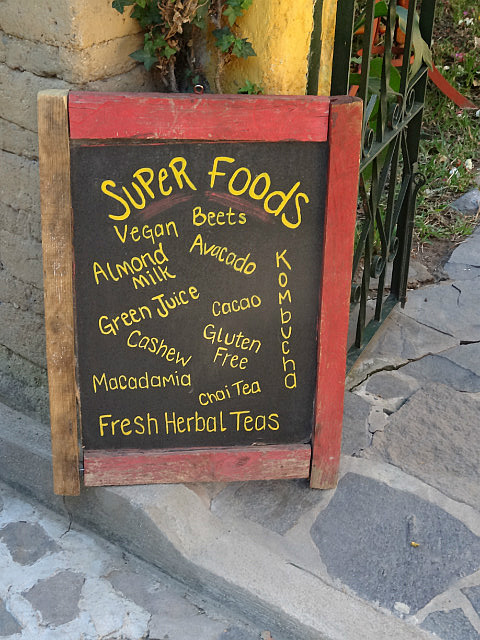

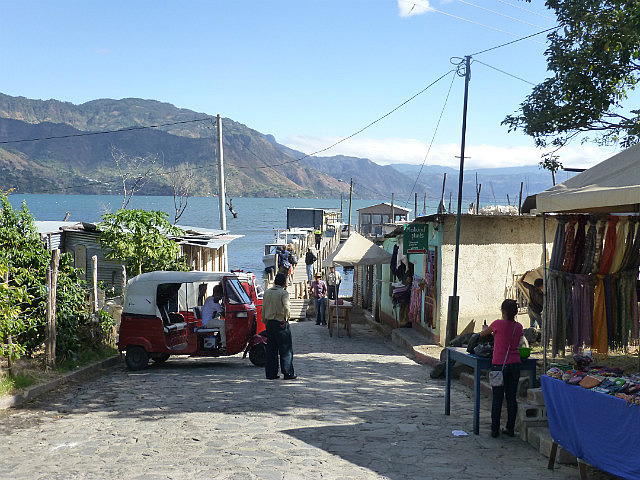
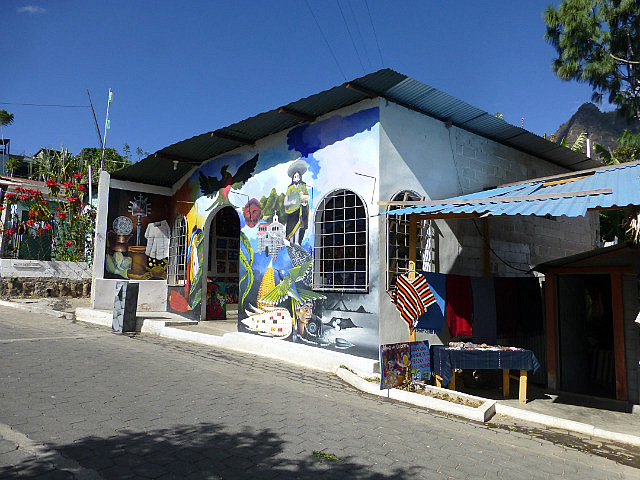
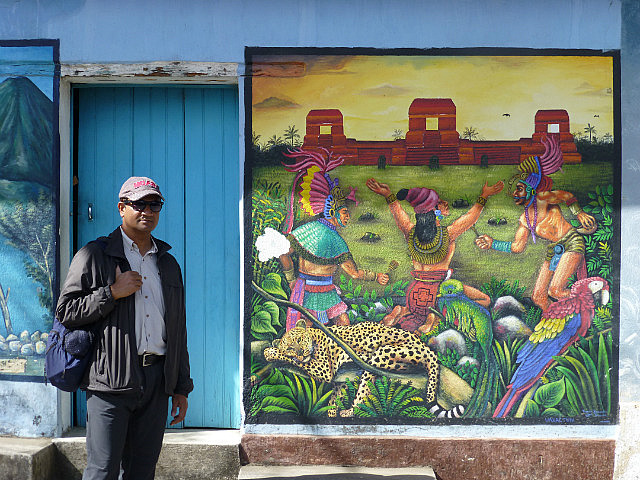
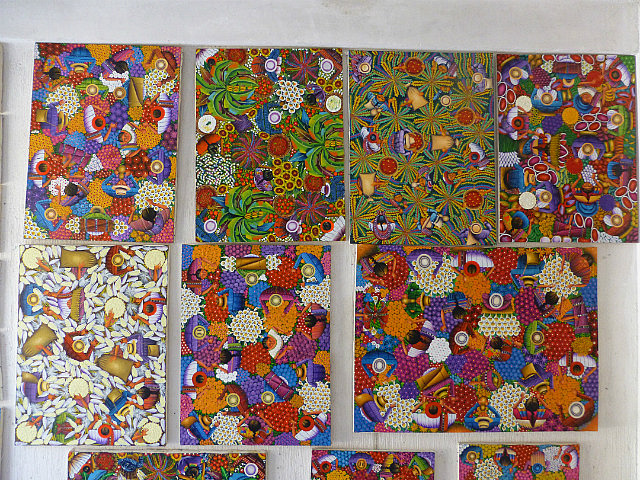
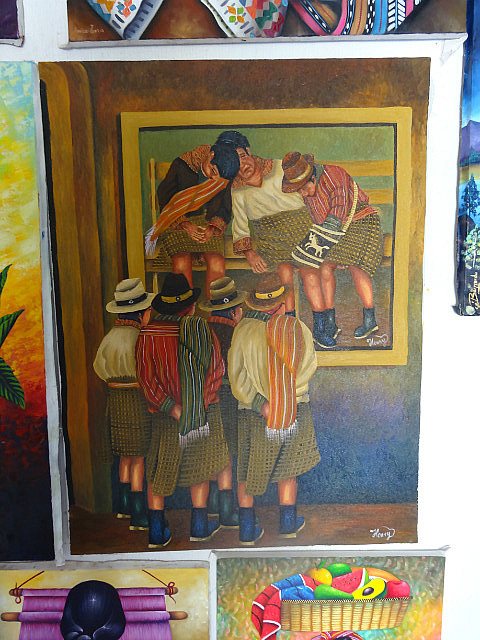
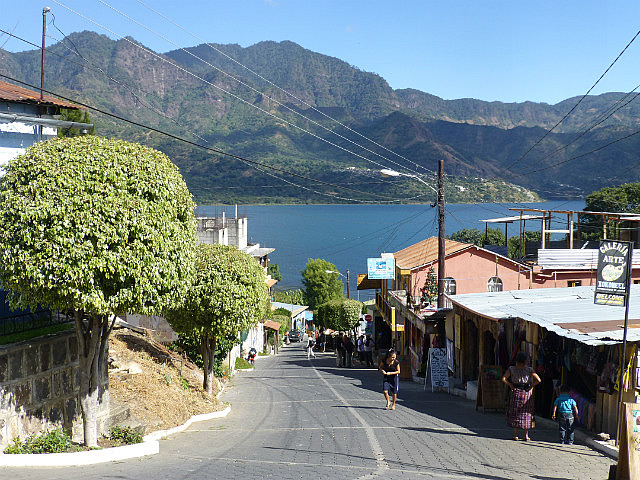
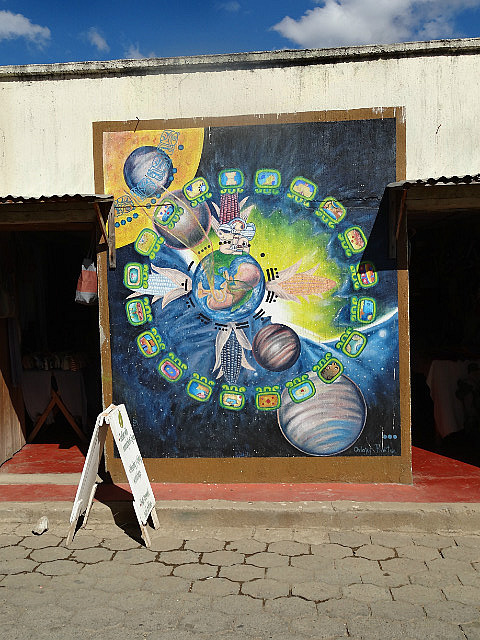



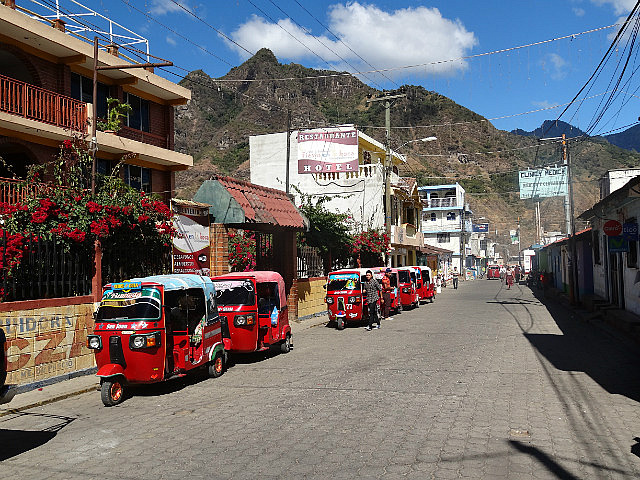
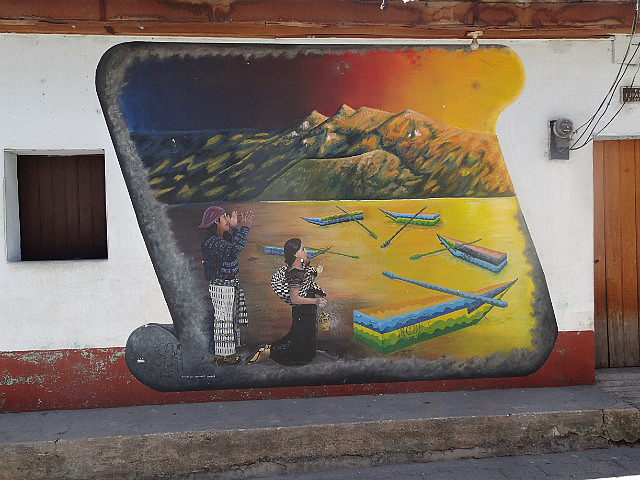

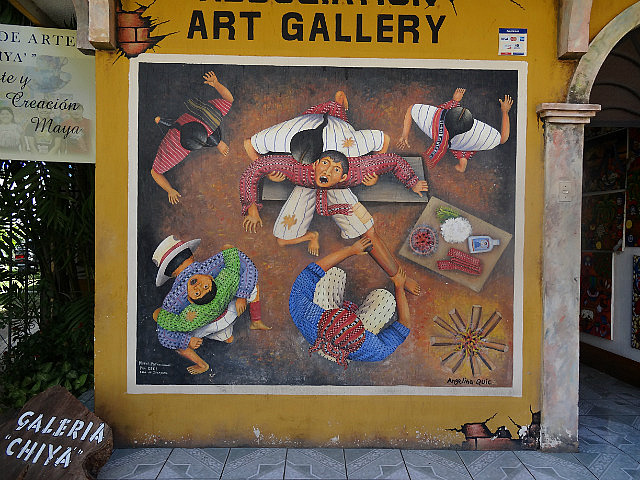

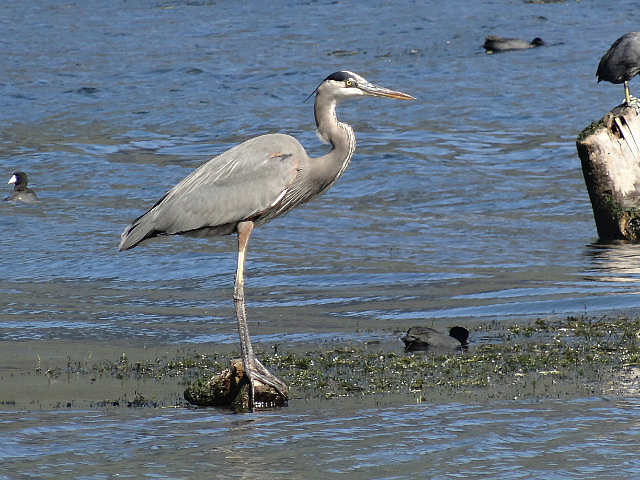

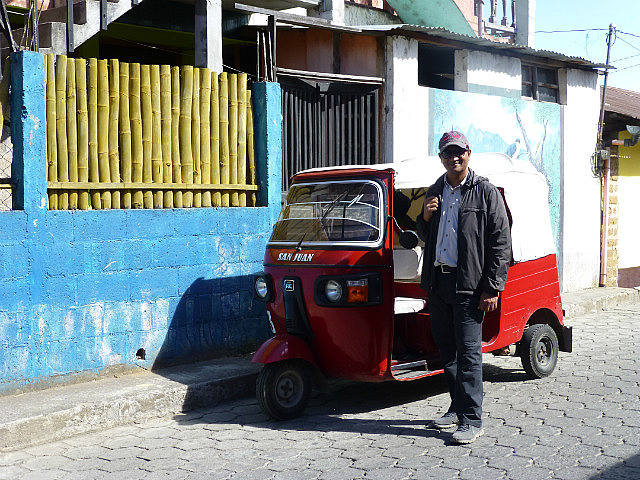
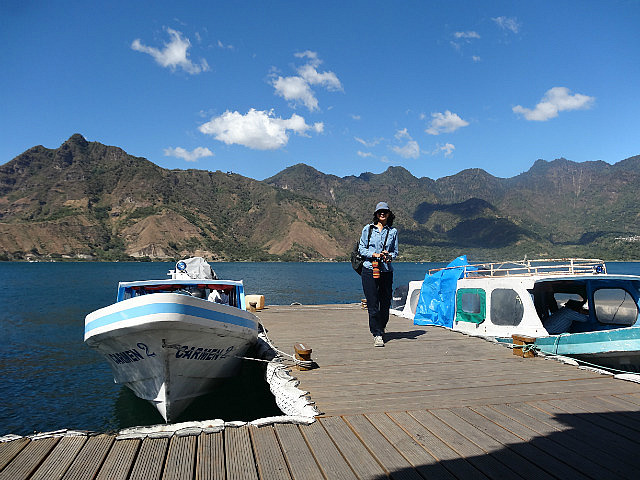

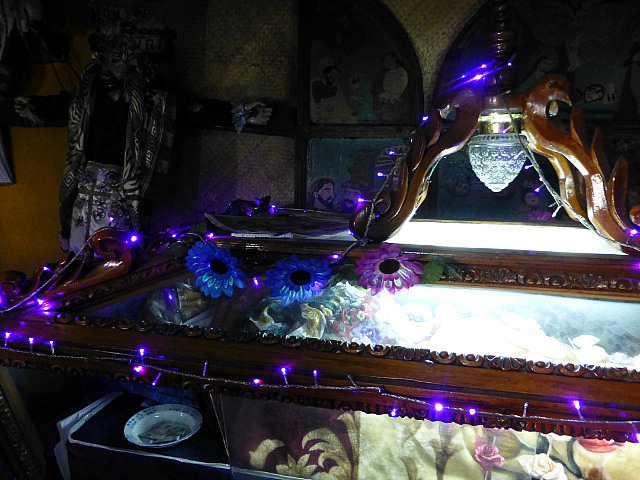

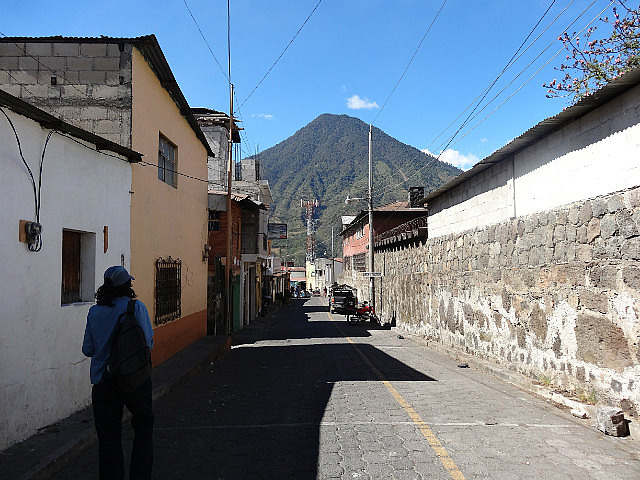
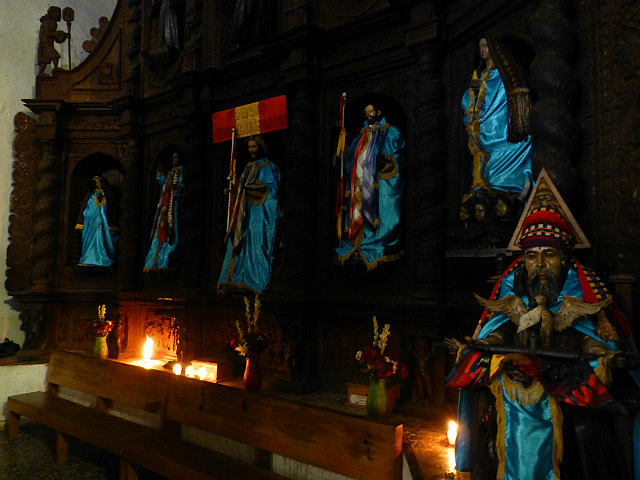


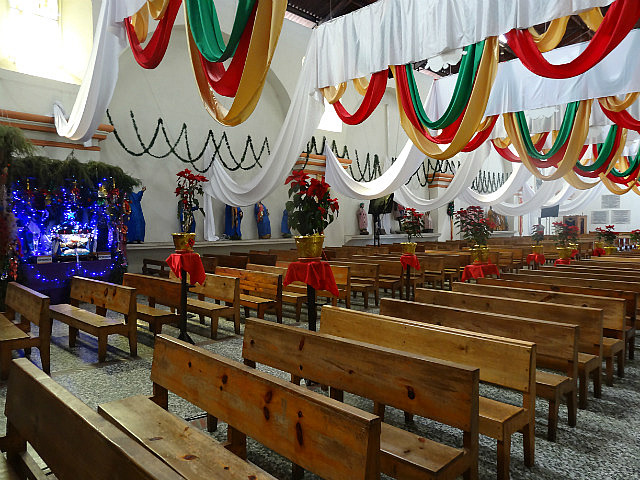
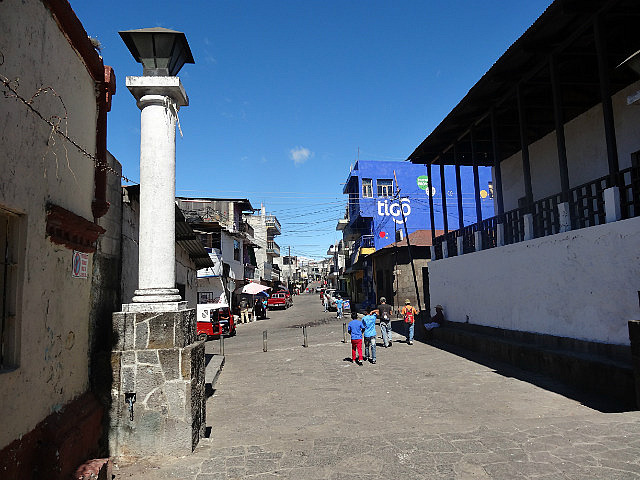
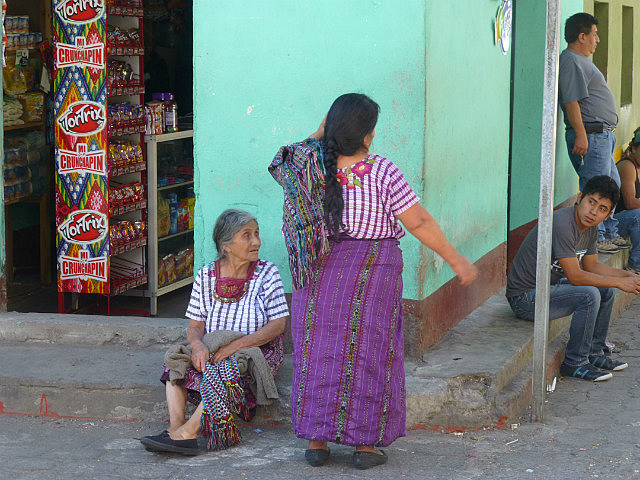

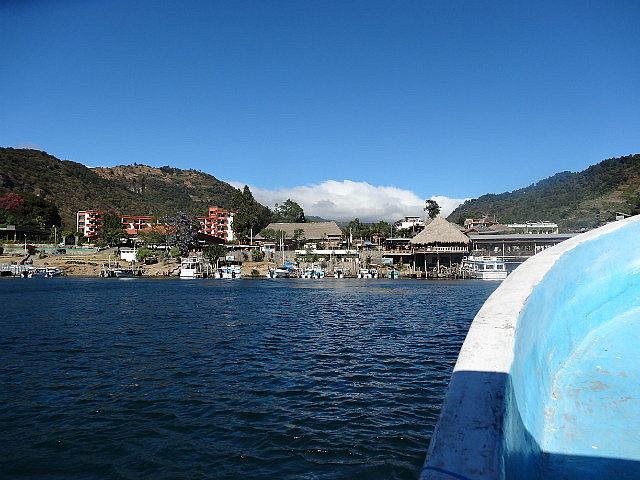
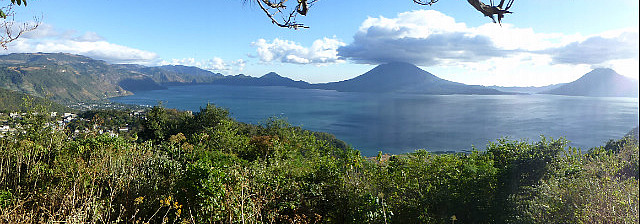
Comments